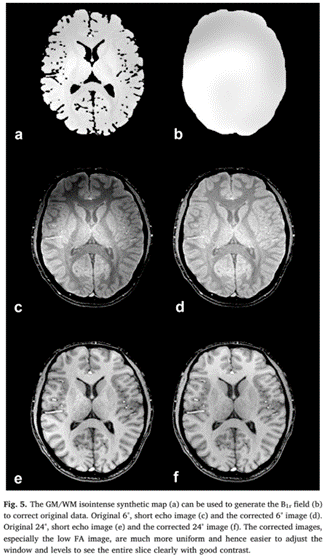STrategically Acquired Gradient Echo (STAGE) imaging, part II: Correcting for RF inhomogeneities in estimating T1 and proton density
By: Karen Holzberger, President & CEO of SpinTech MRI
Author(s): Yu Wanga , Yongsheng Chenb,c,d , Dongmei Wua , Ying Wange , Sean K. Sethic,f , Guang Yanga , Haibin Xiea , Shuang Xiag , E. Mark Haackea,b,c,d,e,f,⁎
Journal: Magnetic Resonance Imaging
Published: 2018
Read Full Paper: https://www.sciencedirect.com/science/article/abs/pii/S0730725X17302291?via%3Dihub
Abstract

The purpose of this study was to develop a method for mapping the B1 transmit (B1t) and B1 receive (B1r) fields from two gradient echo datasets each with a different flip angle and from these two images obtain accurate T1 and proton density (PD) maps of the brain.
Methods
A strategically acquired gradient echo (STAGE) data set is collected using two flip angles each with multiple echoes. The B1t field extraction was based on forcing cortical gray matter and white matter to have specific T1 values and fitting the resulting B1t field to a quadratic function. The B1r field extraction was based on synthesizing isointense images despite there being two or three tissue types present in the brain. This method was tested on 10 healthy volunteers and 20 stroke patients from data acquired at 3.0 Tesla.
Results
With the knowledge of the B1t and B1r fields, the uniformity of tissue T1 and PD maps was considerably improved. T1 values were measured for both the midbrain and basal ganglia and found to be in good agreement with the literature.
Conclusions
STAGE provides a practical way to assess the B1t and the B1r fields which can then be used to correct for spatial variations in the images.

